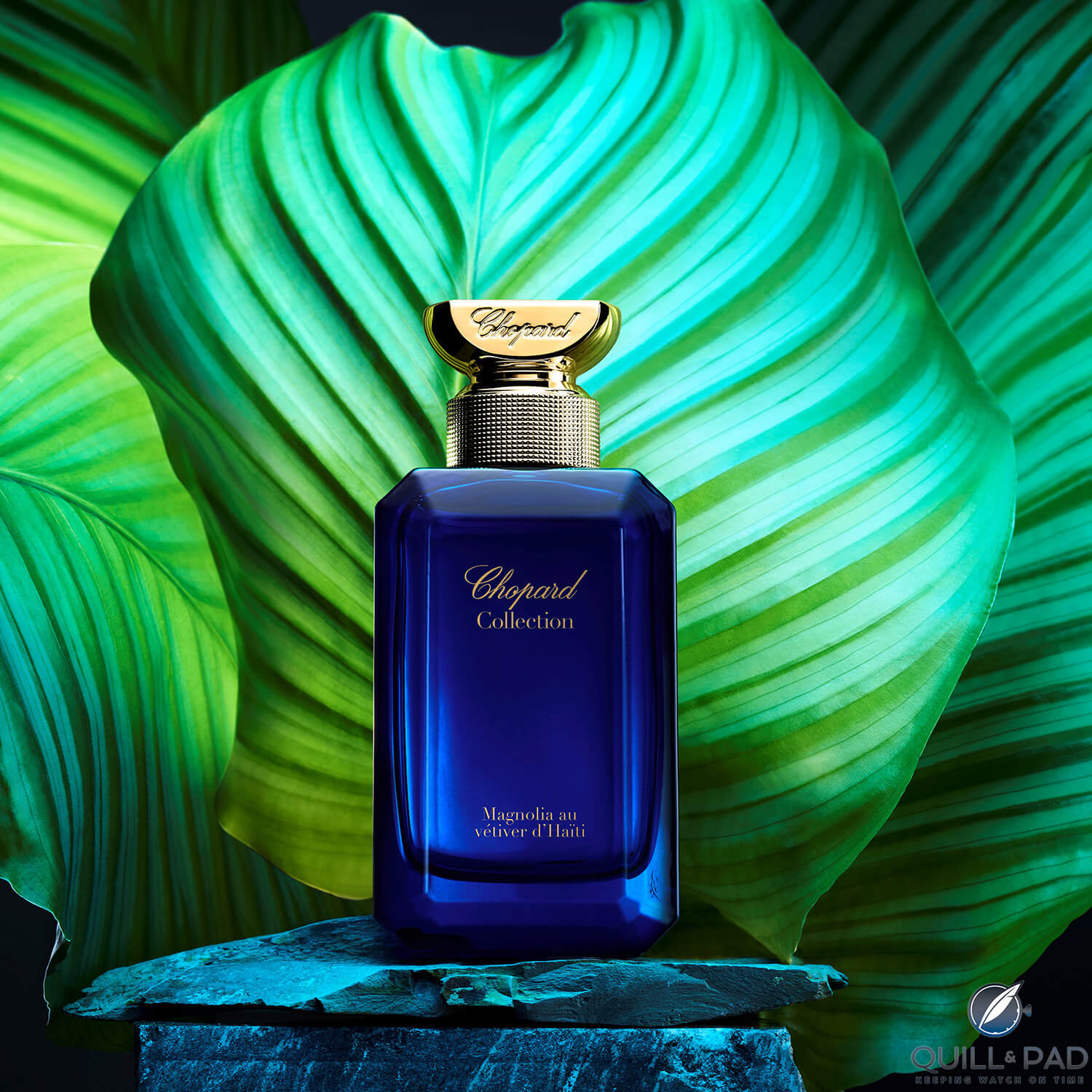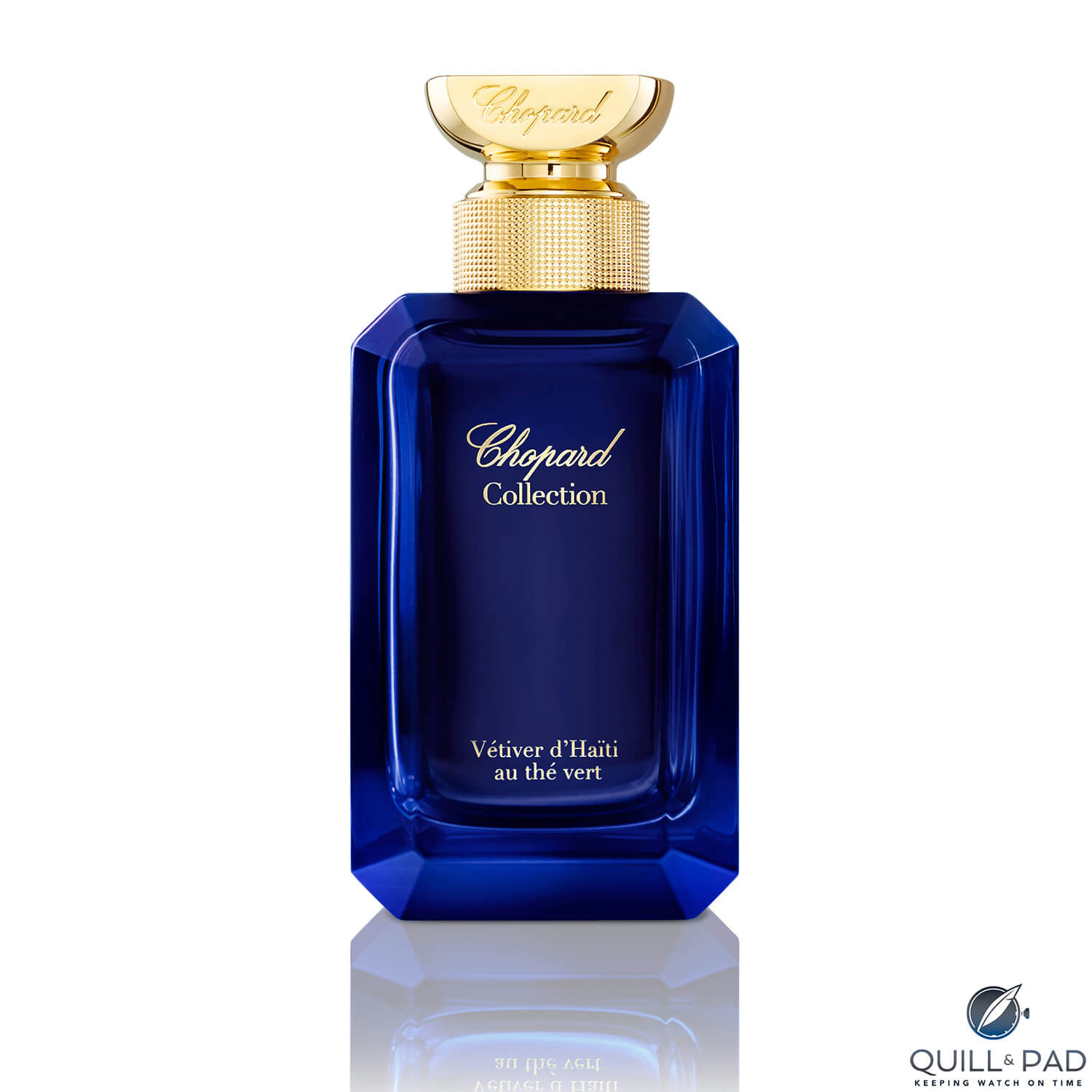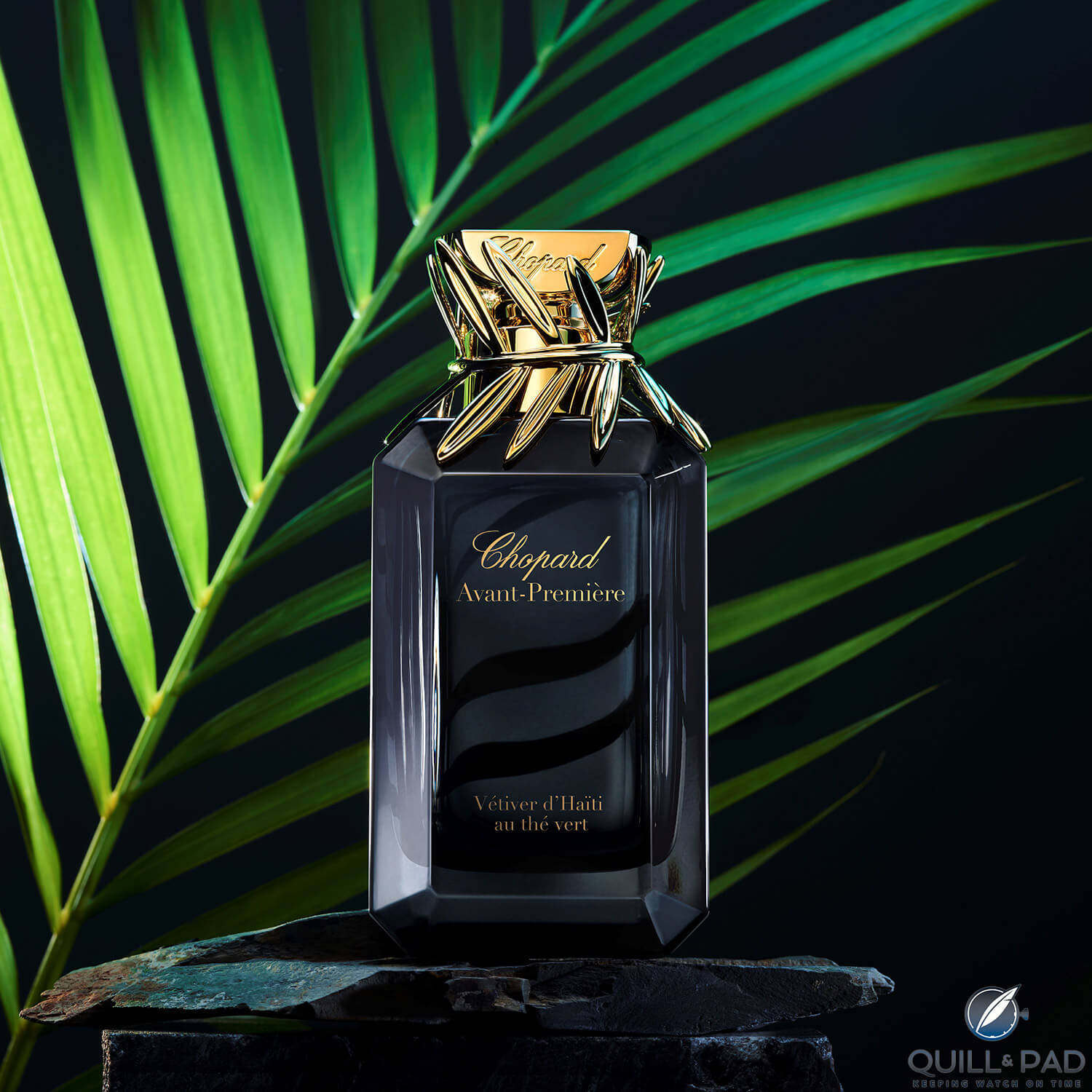by Martin Green
It is interesting, though perhaps not surprising, that few watch brands diversify into other market segments. And when they do it is usually with another brand that’s likely to be either upscale or downmarket of themselves, which brings its own risks and rewards.
Venturing off into other fields is rare; however, it can be very successful, especially in the field of scents.
In 1992 Chopard took the jump and designed a collection of scents based on its jewelry and watch collections. And it took off at a running start because the first scent, a rich oriental vanilla fragrance named Casmir, was very well received, proving to be one of many to come.
For the past 20 years, Chopard has partnered with Coty in the creation of scents. Founded in 1904 by François Coty in Paris, this company has played an important role in giving French perfume its glamorous reputation worldwide.
This has also turned Coty into a behemoth of a company, now spanning more than 77 brands, with a total revenue of $9 billion per year. That’s a lot of eau de cologne!

Chopard Magnolia au Vétiver d’Haïti
The sheer size of Coty provides a clue as to why Chopard decided to eventually take a different path, as the strength of the brand has always been the personal touch and deeply held values. With the founding of Chopard Perfumes, it took full control of its scents and immediately kicked things into the next gear.
Chopard, just passing through
One of the core beliefs of Chopard is that we are merely passing through our time on this planet and that we have the obligation to show good stewardship while doing so.
The firm’s dedication is highlighted by the use of “fairmined” gold (more info about what this is and some watches that are made out of it in Chopard L.U.C XPS And Tourbillon QF In Fairmined Gold: Making A Sustainable Difference), and Chopard also sources ingredients for its new perfumes with the same approach. To accomplish this, Chopard partnered with the Swiss company Firmenich, which specializes in fragrances and flavors.
This allows Chopard to source the three main ingredients for its new perfumes in a sustainable way.
The beauty is that this works on several levels. By helping the farmers responsibly grow and harvest their crops, the quality increases. Even more so because both a fair price is paid for their products and investments are made in local schooling and health care.
This means that the farmers can dedicate more time and effort to further perfecting their farming methods while ensuring a better present and future for their communities. Chopard benefits as well as it gets the finest quality vetiver from Haiti, Bourbon vanilla from Madagascar, and cardamom from Guatemala
The noses make the difference
Having access to fine ingredients is one thing, but they also need to be combined in just the right way to create a truly impressive scent. For that, Chopard teamed up with two master perfumers.
Nathalie Lorson comes from Grasse, a city on the French Riviera known as the perfume capital of the world. She is not completely new to Chopard, as in 1997 she created the scent Chopard Wish and in 1999 Casran, both of which became classics in their category.
Alberto Morillas, the other master perfumer Chopard teamed up with, is also one of the greats. The number of scents he has created is nearly endless and includes many for brands including Kenzo, Givenchy, Issey Miyake, and Bulgari. Unlike Lorson, Morillas grew up in Spain and uses that influence combined with an encyclopedic knowledge of perfume history to guide him forward.
Creations with wolfwood, cardamom, and other exotics
Chopard’s sustainably sourced ingredients fuel four new scents, which are a bit of a departure from the brand’s previous perfumes – at least in name. Now the main ingredients take center stage.
This also says something about the position of Chopard in the world of scents. No longer do the scents need a direct visual connection to the brand’s high jewelry and fine watchmaking collections, today they can stand on their own.
With Magnolia au Vétiver d’Haïti, Lorson created a very floral magnolia scent that is however grounded by adding vetiver. This gives the perfume a surprising complexity, especially in combination with the additional notes of amber, sandalwood, violet leaf, and pink pepper.

Chopard Vétiver d’Haïti au Thé Vert
Morillas also uses vetiver as a key ingredient in his creation for Chopard’s Vétiver d’Haïti au Thé Vert. He sets the vetiver off against a note of green tea, combining it with bold notes such as cedar, musk, amber, and wolfwood, giving the scent a surprising edge.

Chopard Vanille de Madagascar
The vanilla and cardamom return in two other creations by Lorson: one is Vanille de Madagascar, a tribute to high-quality bourbon vanilla, which is combined with notes of caramel and chocolate. While this reads like a recipe, additional notes of bergamot, orange blossom, and cedar ensure that this scent has a mature character.
The same can be said of Néroli à la Cardamome du Guatemala, where the citric scent of neroli complements the spicy, oriental small of the cardamom.
Altogether, these four scents form a very promising start of the new chapter Chopard has entered with its perfumes.
This haute parfumerie collection opens Chopard to a new international clientele apart from the worlds of watches and jewelry.

Avant-Premièr: Chopard Vétiver d’Haïti au Thé Vert
The perfumes also represent a constant reminder of the Chopard brand, as most people keep their scents in their bath- or bedroom and see them on a daily basis. Maybe something for non-jewelry brands to think about in these challenging times, although it might take a while until they have reached the level Chopard is operating at right now.
For more information, please visit www.chopard.com/intl/accessories/fragrances.
Leave a Reply
Want to join the discussion?Feel free to contribute!





















































Worked for Davidoff! They made more off of Cool Water than all the cigars they ever sold!
Great example, Steven! Thanks for sharing this with us!